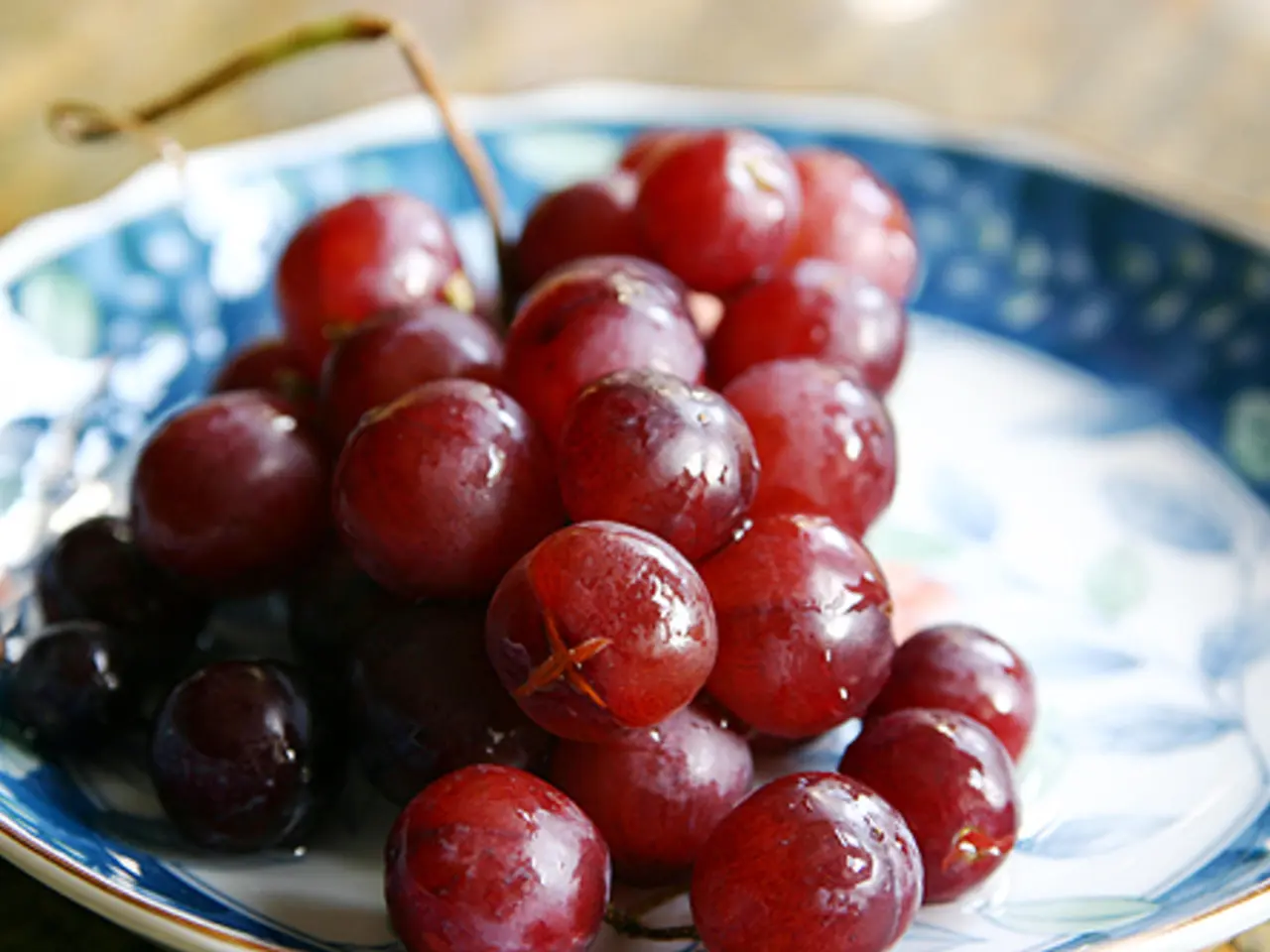Fresh and Flavorful: It's Time for Bing Cherries!
Bing cherries, a popular cherry variety recognized as one of the best in the world, offer a unique blend of health benefits and culinary delights. These vibrant, red fruits are not only a treat for the taste buds but also a treasure trove of nutrients that can contribute positively to our health.
Bioactive Compounds
Bing cherries are rich in bioactive compounds, including antioxidants and anthocyanins, which give them their deep red colour and offer heart health benefits by reducing oxidative stress and inflammation. Additionally, polyphenols in cherries help maintain cardiovascular health by lowering LDL cholesterol and improving blood pressure.
Health Benefits
The health benefits of Bing cherries are manifold. Consuming them may decrease the risk for cardiovascular disease by improving lipid profiles and blood pressure. Their low glycemic index makes them suitable for individuals with diabetes, as they can help regulate blood sugar levels.
Bing cherries are also beneficial for weight management due to their low calorie count but high nutrient content. Their anti-inflammatory properties can help reduce markers of inflammation, which is beneficial for conditions like arthritis and gout.
Moreover, Bing cherries contain tryptophan and melatonin, which can improve sleep quality. Their high antioxidant content reduces oxidative stress, protecting against chronic diseases.
Evidence
Research has shown that consuming Bing cherries can significantly reduce urate levels, which is beneficial for managing gout. Additionally, tart cherry juice, which is similar in composition to Bing cherries, has been shown to improve lipid profiles and reduce inflammation, both of which are relevant to metabolic syndrome.
Culinary Delights
Bing cherries are great for pies because of their sweetness and because the berries retain their texture even after baking. A classic Bing Cherry Pie recipe uses 4-1/2 cups of pitted and sliced Bing cherries, along with sugar, fresh lemon juice, vanilla extract, almond extract, unsalted butter, cornstarch, and an egg wash for sealing and browning the crust.
Kathy Higaki's Pie Crust recipe, a simple yet effective one, includes 2 cups of all-purpose flour, 1 teaspoon of salt, 3/4 cup of vegetable shortening, 1/4 cup of ice water, and requires sifting together the flour and salt, adding the shortening, cutting it into the flour with a pastry blender, adding the ice water, and mixing with a fork till it comes together and forms a ball.
Origins and Production
Bing cherries are a cultivar created in 1875 in Milwaukie, Oregon, by horticulturist Seth Lewelling and his Mandarin Chinese-American foreman, Ah Bing. Most of the Bing cherries come from central and eastern Oregon, as Oregon is the third largest producer of sweet cherries in the United States.
In conclusion, Bing cherries offer a delightful blend of health benefits and culinary delights. Whether you're looking to improve your health or satisfy your taste buds, Bing cherries are a great choice.
- The deep red color and unique blend of health benefits in Bing cherries are due to their rich content of bioactive compounds, such as antioxidants and anthocyanins.
- Consuming Bing cherries may help manage health conditions like cardiovascular disease, diabetes, gout, and arthritis, thanks to their low calorie count, high nutrient content, anti-inflammatory properties, and positive effects on blood sugar levels and lipid profiles.
- Research evidence supports the claim that Bing cherries and similar products, like tart cherry juice, can have a significant beneficial impact on conditions related to metabolic syndrome, gout, and inflammation.
- A classic Bing Cherry Pie recipe features 4-1/2 cups of pitted and sliced Bing cherries, along with sugar, fresh lemon juice, vanilla extract, almond extract, unsalted butter, cornstarch, and an egg wash for browning the crust.
- The origins of Bing cherries trace back to Milwaukie, Oregon, in 1875, where horticulturist Seth Lewelling and his Mandarin Chinese-American foreman, Ah Bing, created the variety. The majority of Bing cherries are produced in central and eastern Oregon, making Oregon the third largest producer of sweet cherries in the United States.




